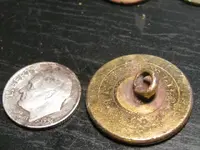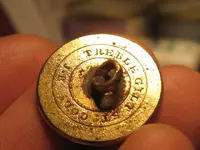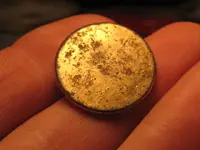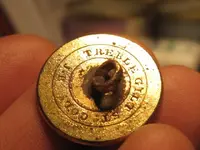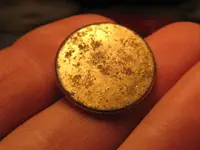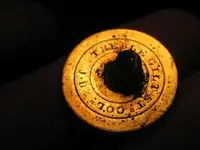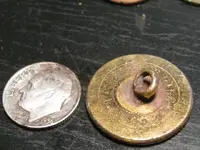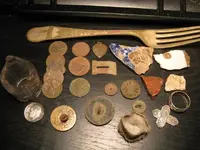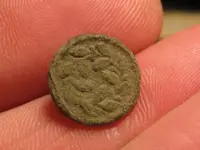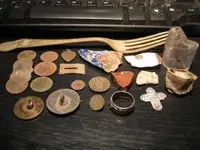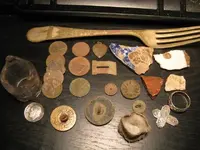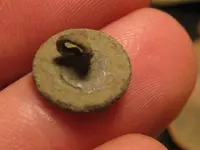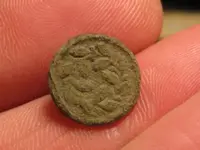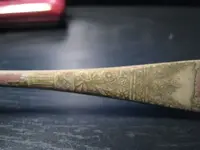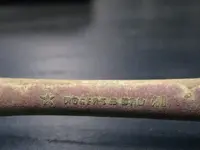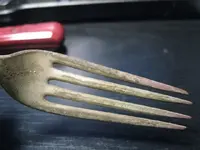I too would go with the 1800 to 1840 date range --although still made and used after the late 1830's * flat buttons were thought of as "out of fashion" as newer "fancier" designs 2 piece designs became more affordible and popular . -- with that thought in mind -- I say most likely Josiah Baldwin 1800 - 1810 * -- but the other John Boylan (1850 - 1885) can not be ruled out if the button was found in the south -- since the south imported lots of buttons from england during the civil war.
the war of 1812 showed americans just how dependant we were upon the british for buttons -- during the war there was a serious "button shortage" for both military and civilian use --and so SCOVILL the big US button maker along with others started making "american" made buttons (especially for the military) -- the thought of the time being --its not good to be dependant upon another country to makemilitary "supplies" (in this case buttons) needed by the USA military because in case of war we can be "cut off" --having regular steady govt military contracts helped get SCOVILL and other US button makers get up and going
in the civil war with most of the american button makers being in northern states under union control , the south was forced to get buttons from england via "blockade runners" --the "button shortage" in the south meant that any and all buttons were used and reused off old garments --many popular older 1830 era "flower" buttons were used on confederate uniforms stitched on by mothers, wives, girlfreinds and even the soldiers themselves .
items found along with the button in the general area might help to tip it towards one of the two JB button makers "time frames"-- are more early 1800's (1800 /1810) or more civil warish era ( 1850 /1885) items found there?
buttons are area "time markers-- three main items can help tell me what time period a area was used by humans -- coinage , buttons and pottery * are all of interest to me as "time stamp type material"





